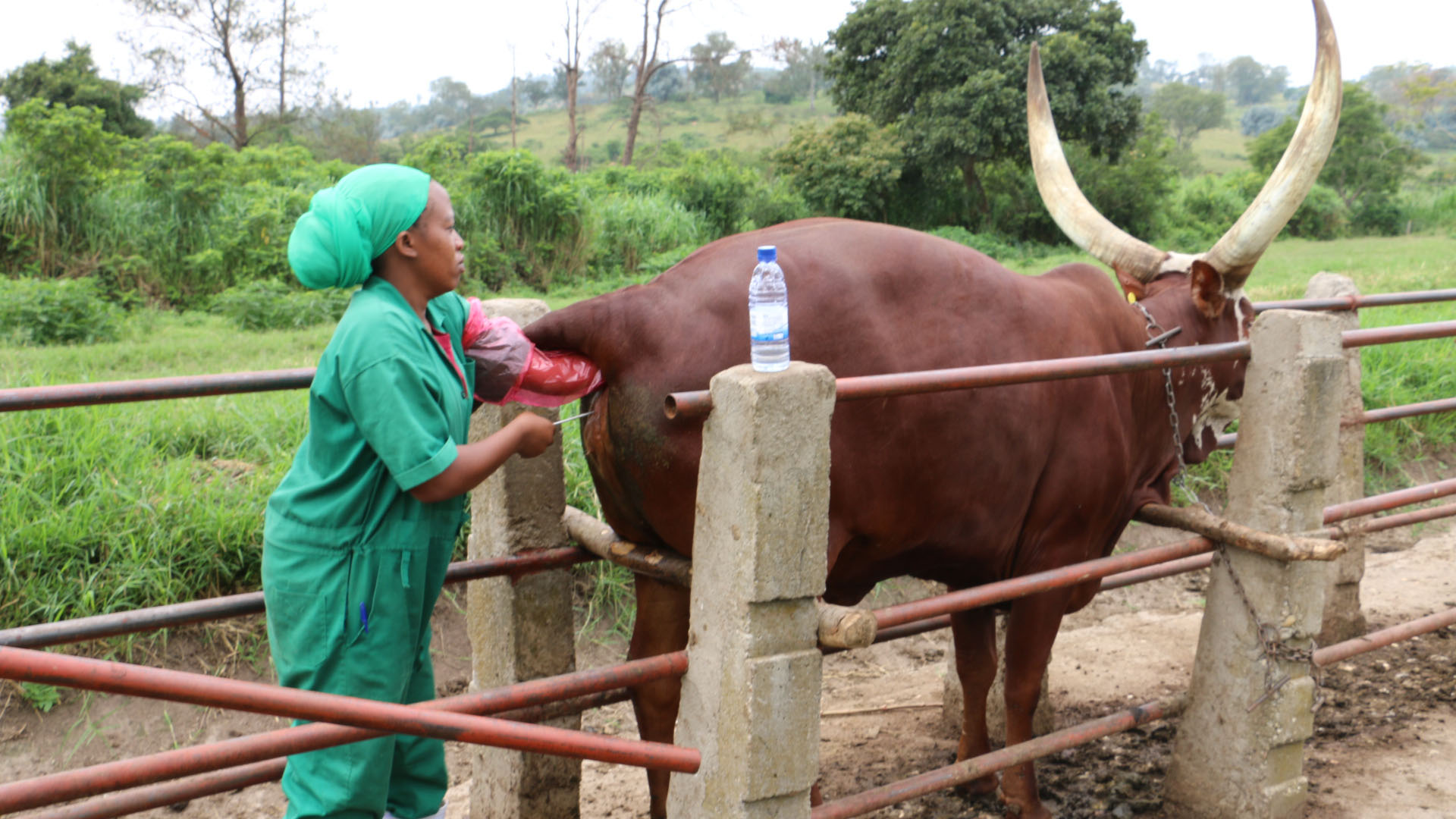

The Rwanda Agriculture and Animal Resources Development Board (RAB) has revealed plans to scale up bovine embryo transfer technology use in the country to increase improved cattle breeds and output.
This development could respond to cattle farmers’ need to expedite the availability of highly productive cows for meat and milk production.
Solange Uwituze, Deputy Director General in charge of animal resources development at RAB, told The New Times that embryo transfer (ET) technology is commonly used to increase restocking of a new breed "because, unlike semen, with embryo you carry 100 percent of the breed genetics.”
The target will remain on increasing the restocking of new dairy and beef breeds and conservation of local cattle breeds such as Inyambo. Therefore, RAB is ready to support efforts of specialised dairy and beef cattle farmers to adopt the technology in their farms by providing technical support, Uwituze observed.
Bovine embryo transfer is a reproductive technology that consists of implanting embryos of a donor cow into a different cow (recipient) by making it possible for the donor cow, which is always of high genetic merit, to produce many offspring per year.
Under this technology, embryos are produced by treating a donor cow with superovulation hormones to help her produce many eggs, which are fertilised to form embryos.
Fertilisation of the eggs, Uwituze explained, can be done within the donor cow through artificial insemination (in vivo fertilisation) or in laboratory by joining egg (ovum) and spermatozoa (in vitro fertilisation). Embryos are grown and ready to be frozen or transferred into a recipient cow on around the 7th day after fertilisation.
One donor cow can be flushed around three times per year by producing a total of more than 18 embryos (six embryos per flushing session), she indicated.
Birasa Nyamulinda, CEO of Gako Meat Company – a firm that intends to increase quality meat production for local and export markets – said that currently, the national livestock policy has been focusing on dairy cattle farming, citing the dairy cows given under the Girinka one cow per poor family programme.
Increasing beef production in the country, he said, requires putting more effort into beef cattle, including the adoption of embryo transfer.
"We are working on a plan to use embryo transfer technology in order to rapidly get breeds that can help achieve adequate meat production,” he said.
Gahiga Gashumba, Chairperson of Nyagatare Dairy Farmers’ Cooperative Union, told The New Times that embryo transfer is a much-needed technology that could help increase milk production to meet the increasing demand for this product among consumers in the country.
This, he said, also includes supplying a powdered milk factory being set up in Nyagatare District (by Inyange Industries Ltd), which will need 500,000 litres of milk [to process] per day.
"Embryo transfer will help in rapid cattle genetic improvement for increased milk production,” he said, indicating that it has not yet been spread to all parts of the country, and that there is a need to extend it.
The cost of one bovine embryo transfer ranges from Rwf10,000 to Rwf15,000 according to veterinary service fees set in 2018 by the Ministry of Agriculture and Animal Resources.
Success rate still low, but the trend is promising
In Rwanda, the bovine ET technology has been tried since early 2010s with low success rate [because of limited skills], according to RAB.
Uwituzwe noted that in recent years, RAB partnered with different development partners such as the International Fund for Agriculture Development (IFAD) through the Rwanda Dairy Development Project (RDDP) and the Royal Jersey Agricultural and Horticultural Society (RJAHS), to bring in expert embryologists to train local team in order to improve success rate and upscale the technology.
So far, she said, three sessions of capacity building have been carried out and embryo transfer success rate has increased from almost zero to 26 percent up to 2020 and to 37.7 percent in the fiscal year 2021/2022.
Since the start of this technology in Rwanda, Uwituze indicated, more than 152 bovine embryos have been implanted. Of these, 56 embryos were transferred in the last fiscal year 2021/2022 alone, she said.
"With the increasing success rate, RAB plans to scale up the technology to more farmers with a specific objective to increase restocking of new breeds in the dairy and beef sector,” she observed.
Data from RAB shows that Rwanda's annual meat production stood at 176,000 tonnes in 2021.
For milk production, the country’s annual milk production in Rwanda (for the year 2021) was 891,326 tonnes, whereas the national target is over 1 million tonnes under the National Strategy for Transformation (NST1) by 2024.


